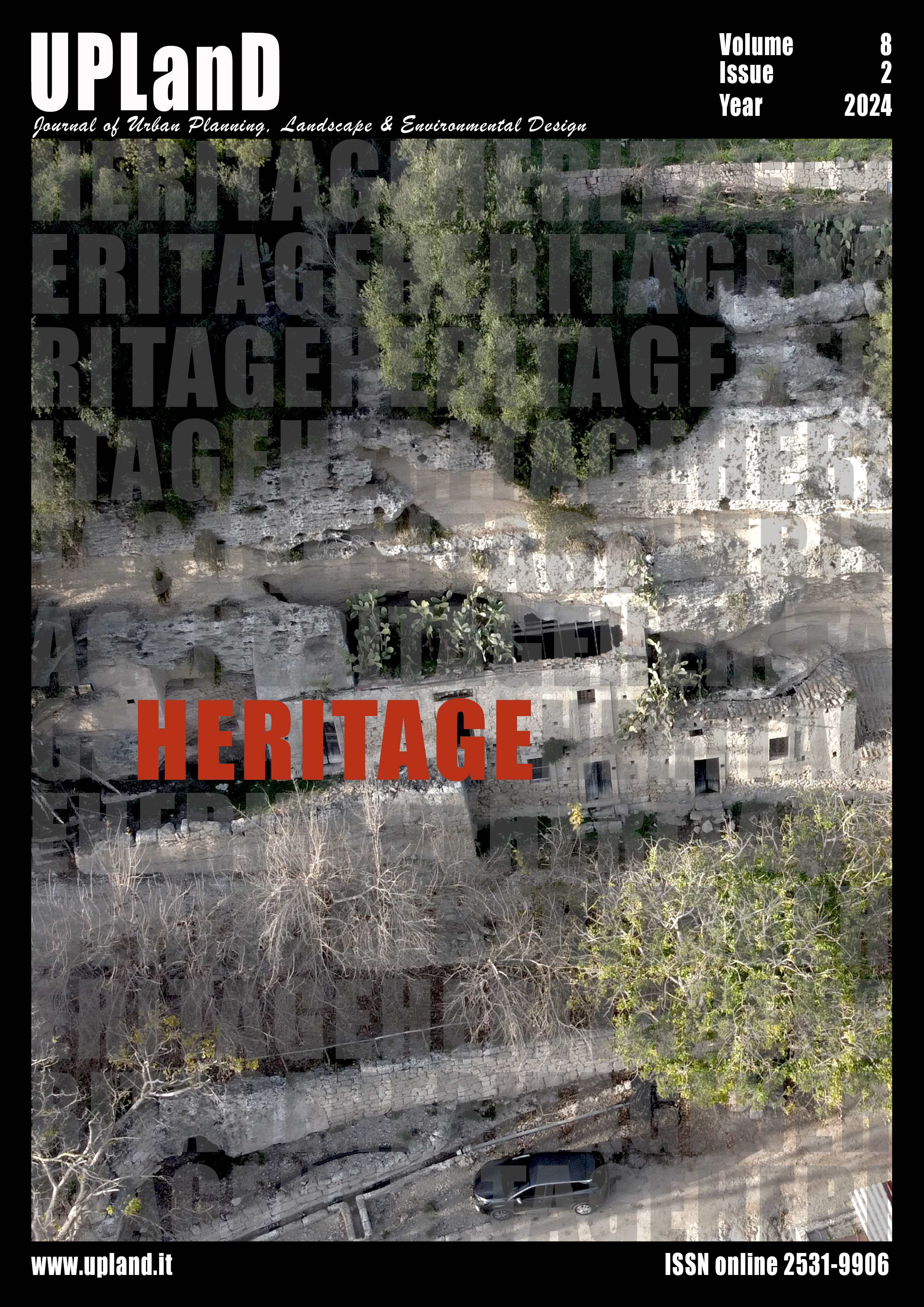Generate communities: the voice of the inhabitants of the Fuorigrotta neighbourhood in Naples
DOI:
https://doi.org/10.6093/2531-9906/11467Keywords:
Human-environment relationship, Perceptual survey, Third places, Participation, Temporal phasesAbstract
To counter the dangerous trend of neglect and abandonment of places, synonymous with territorial decay and fragmentation, landscape policies must aim to enhance the active role of local communities in the management and decision-making processes concerning those territories, with particular attention to younger generations. The analysis of perception, and consequently the image of urban spaces as an aggregate of all stimuli, is a fundamental step in understanding the relationship between the built environment and the people who inhabit or use it. This allows for a deeper exploration of community needs, moving beyond a purely analytical assessment to consider temporal, spatial, and behavioural dimensions. A perceptual analysis enabled a comprehensive understanding of the issues affecting the Fuorigrotta neighbourhood in Naples, identifying potentially transformable spaces and formulating intervention strategies and guidelines to be applied in an initial phase of spatial transformation. The described approach, capable of generating public spaces of aggregation and sociality where communities can feel fully involved and completely represented, fosters respect for places and promotes their ongoing care and maintenance
Downloads
References
Baroni, M.R. (2008). Psicologia ambientale. Bologna: Il Mulino.
Berlyne, D.E. (1971), Aesthetics and Psychobiology. New York: Appleton-Century-Crofts.
Bonaiuto, M., Fornara, F. & Bonnes, M. (2006). Perceived residential environment quality in middle- and low-extension Italian cities. European Review of Applied Psychology / Revue Européenne de Psychologie Appliquée, 56(1), 23–34. doi:/10.1016/j.erap.2005.02.011
Bonaiuto, M., Bilotta, E. & Fornara, F. (2012). Che cos’è la psicologia architettonica. Roma: Carocci Editore.
Clemente, M. (2017). Re-design dello spazio pubblico. Milano: Franco Angeli.
Colombo, G. (2002). Qualità urbana, principio fondamentale per vivere meglio. Il Giornale dell’Ingegnere, 14.
Comune di Napoli, (2022). Usi temporanei e urbanistica tattica
Costa, M. (2016). Psicologia ambientale e architettonica. Come l’ambiente e l’architettura influenzano la mente e il comportamento. Milano: Franco Angeli.
Deriu, R. (2015). I luoghi della socievolezza: spazi pubblici e spazi a uso pubblico nella città di Alghero. Studi di sociologia, 53(1): 87-109.
Dessi, V. & Astolfi, L. (2020). Qualità vs quantità. È possibile quantificare la qualità dello spazio pubblico?. Techne, 19.
Franceschini, A. (2003). Percezione e spazio urbano. Teorie e metodi per l’analisi percettiva dello spazio urbano in una città alpina: con un epilogo in forma di dialogo. Quaderni del Dipartimento: URB materiali e ricerche, 2. Università degli Studi di Trento, Dipartimento di ingegneria civile e ambientale.
Gallino, T. (2007). Luoghi di attaccamento. Milano: Raffaello Cortina Editore.
Jacobs, J. (1969). Vita e morte delle grandi città. Torino: Einaudi (ed. or. 1961).
Lynch, K. (2021). L’immagine della città. Venezia: Marsilio Editori (ed. or. 1960).
Mascarucci, R. (2005). Complessità e qualità del progetto urbano. Roma: Maltemi Editore.
Mela, A. (2014). La città con-divisa: lo spazio pubblico a Torino. Milano: Franco Angeli.
Oldenburg, R. (1999). The Great Good Place: Cafes, Coffee Shops, Bookstores, Bars, Hair Salons and the Other Hangouts at the Heart of a Community. New York: Marlowe.
Perugini, M., Bonnes, M., Aiello A. & Ercolani, A.P. (2002). Il modello circonflesso delle qualità affettive dei luoghi. Sviluppo di uno strumento valutativo italiano. TPM – Testing, Psychometrics, Methodology, 9(4): 131-152.
Russell, J.A. & Pratt, G: (1980). A description of the affective quality attributed to environments. Journal of Personality and Social Psychology, 38(2): 311-322. doi: 10.1037/0022-3514.38.2.311
Downloads
Published
How to Cite
Issue
Section
License
Authors who publish with this journal agree to the following terms:- Authors retain copyright and grant the journal right of first publication with the work simultaneously licensed under a Creative Commons Attribution License that allows others to share the work with an acknowledgement of the work's authorship and initial publication in this journal.
- Authors are able to enter into separate, additional contractual arrangements for the non-exclusive distribution of the journal's published version of the work (e.g., post it to an institutional repository or publish it in a book), with an acknowledgement of its initial publication in this journal.
- Authors are permitted and encouraged to post their work online (e.g., in institutional repositories or on their website) prior to and during the submission process, as it can lead to productive exchanges, as well as earlier and greater citation of published work (See The Effect of Open Access).



